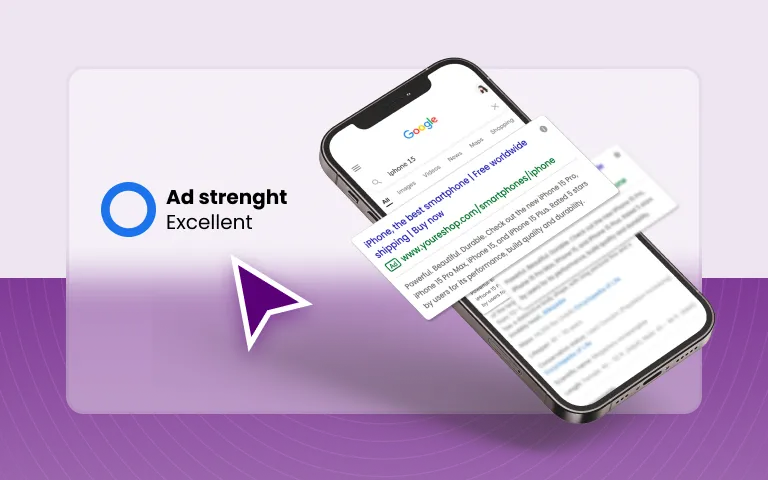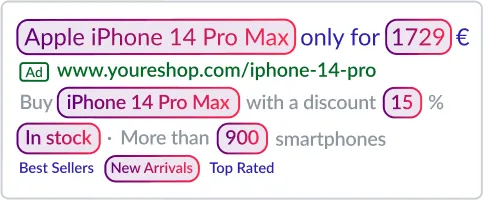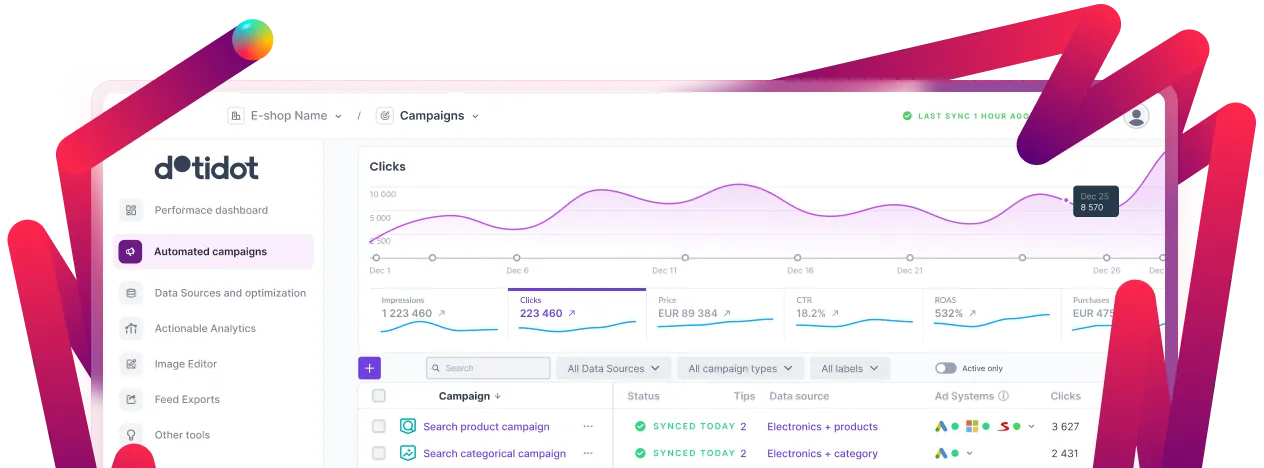Book a call with us







To make your Responsive Search Ads (RSAs) more effective, it's important to give them plenty of options. Use lots of different headlines and descriptions. You can use up to 15 headlines and four descriptions. It's best to aim for the maximum of fifteen headlines and three descriptions. Each headline and description is a chance to match your ad with what people are searching for.
Make sure each headline makes sense on its own. Google mixes and matches them in different orders. Even though the first three headlines often show together, they should still work by themselves.
Your words matter. Avoid repetitive or similar variants of the same headline. If all your headlines and descriptions are too alike, your ads might not even appear. Effective RSAs feature a variety of unique messages, which can be based on:
Do not lie in your ads. In the end, it is always the return on ad spend that you care the most. So, avoid attracting people who won't end up buying. Instead, focus on what's great about your product and brand.
Since your campaign budget might be limited, it's important to screen out people before they click and cost you money. Make sure your ads match where they lead and what you want people to do.
In Google's responsive search ads, the system automatically tests different headlines in various positions to determine their effectiveness. This testing occurs within headlines 1, 2, and 3, as well as descriptions, optimizing the message for each user, keyword, and device.
To ensure specific messages always appear in your ads, such as brand messages or disclaimers, you can "pin" certain headlines or descriptions. By pinning them, you guarantee their consistent display in your ads, addressing specific messaging or compliance requirements.
Example: If you're promoting a jewelry store emphasizing its country of origin, you can create a headline like "Jewelry store: Made in UK" and pin it as the first headline. This ensures the message appears in every ad impression, irrespective of other headline rotations.
To pin a headline or description, click the pin icon next to it while creating your ad and choose the desired position.
Keep in mind two basic rules:
TIP: Pin at least one headline if your ads don't have much data yet. The ad system will learn quicker because you have reduced the number of possible headline combinations.
The combinations report provides insights into how different ad combinations resonate with your audience, helping you understand the effectiveness of various headline and description pairings.
While this report highlights which combinations receive more impressions, it's essential not to solely rely on it when pinning headlines or descriptions. Responsive search ads thrive when they can adapt to real-time signals like search queries and user preferences.
Instead, consider optimization or changing headlines or descriptions that aren't performing well based on the insights gained from this report.
While it may show like a funny metric and is not a factor for the auction, it still has a huge impact on your ads overall performance. Your ad strength can be categorized as Poor, Average, Good and Excellent based on various factors:

Just use Ad Strength as your guide to improve your RSAs. Always aim for Good and Excellent to get the best results possible.
Pro tip: Optimization is an ongoing process. Even ads with Excellent ad strength could decline over time as your campaigns gather more data. So, when reviewing your campaign, be sure to also check the ad strength.
Google heavily invests in developing the best AI algorithm to enhance ad performance. Combining all these 'smart' features maximizes their potential.
Let's walk through the basics:
Utilizing these alongside RSA will result in improved performance, increased reach, and more relevant ads.
This is the best way to make your ads relevant and effective. You have two options here. Either use Google's ad customizers in combination with keyword insertion to tailor the ad to your audience and their search intent.
But an even better approach is to utilize a PPC automation tool like Dotidot. It enables you to fully customize and craft highly relevant ads, even if you have thousands of campaigns or ads running.

Optimizing Responsive Search Ads can have a direct impact on many key metrics. But keep in mind they may vary based on your objectives. These 4 metrics should matter to all e-commerce players:
And that's it.
